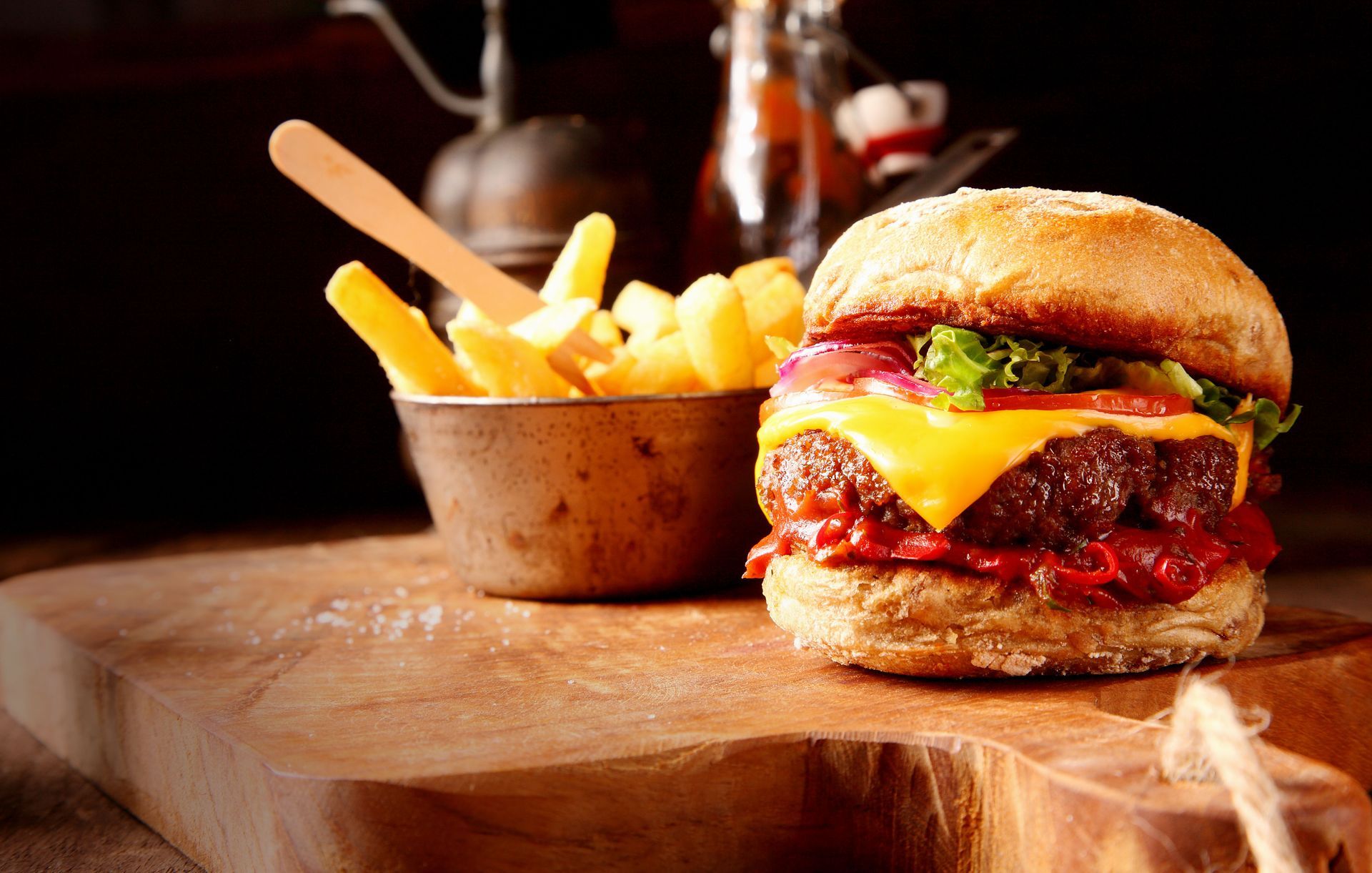November 4, 2025
In towns large and small, there’s something undeniably comforting about stepping into a local diner. The aroma of sizzling bacon, the hum of conversation, and the clink of coffee cups create a sense of familiarity that other restaurants often struggle to replicate. For many Americans, diners are more than just places to eat—they are landmarks of memory, tradition, and connection. They provide a comforting escape from the fast-paced world outside, a place where both newcomers and lifelong residents can feel at home.
Despite the rapid growth of restaurants across the country, diners continue to draw loyal crowds who value authenticity and personal service. These establishments thrive not on massive marketing budgets, but on the genuine relationships they cultivate with their patrons. In this blog, we explore why local diners remain a cherished part of the American culinary landscape.
Nostalgia
Walking into a classic diner often feels like stepping back in time. From gleaming chrome counters to neon signs and jukeboxes, the physical atmosphere evokes memories of simpler days. These nostalgic touches create an emotional bond between diners and their guests, making each visit feel like a return to a place where life was slower and meals were savored. Nostalgia isn’t just about aesthetics; it’s a powerful motivator that encourages repeat visits and long-term loyalty.
The appeal of nostalgia is particularly strong in communities where local diners have existed for a while. Older patrons may remember coming in with their parents or grandparents, while younger visitors often enjoy the retro charm they see on social media or in pop culture. This shared sense of history makes diners more than just a meal stop—they become vessels of communal memory, bridging generations and providing a comforting continuity in an ever-changing world.
Community
Local diners act as casual gathering spots where neighbors, friends, and travelers can share a meal and conversation. The familiarity of the space, from well-worn booths to the clatter of coffee cups, creates a sense of comfort and belonging. Regular patrons often form casual relationships with the staff and other diners, turning everyday visits into social rituals. This sense of familiarity makes diners feel like an extension of the community itself, where everyone feels recognized and welcome.
Beyond just serving food, diners often provide a window into local life. Observing the flow of people—families grabbing breakfast before school, workers meeting over coffee, or longtime patrons catching up on the news—offers a sense of connection to the neighborhood. The atmosphere fosters interactions that might not happen elsewhere, creating an organic, informal community hub. In this way, diners maintain their status as more than just restaurants—they are places where connections naturally form and endure.
Flavor
One of the most compelling reasons people keep returning to local diners is the food. Each dish is crafted to deliver the comforting flavors that guests know and love. From fluffy pancakes to hearty sandwiches and classic breakfast platters, every item is made with care to provide warmth and satisfaction. The menu combines traditional favorites with special touches, ensuring that every meal feels familiar yet exciting. This dedication to quality and flavor keeps patrons coming back again and again.
The diner also offers a variety that appeals to a wide range of tastes. From breakfast favorites served all day to savory lunch and dinner options, there’s something for everyone. Signature recipes and consistent preparation ensure that every plate delivers the same comforting experience, visit after visit. By maintaining this balance of classic dishes and reliable quality, a diner creates meals that feel personal and satisfying.
Tradition
Diners often represent a form of culinary tradition through their menus and approach to comfort food. Classic recipes, familiar flavors, and consistent preparation give guests a sense of reliability and satisfaction. This adherence to familiar dishes helps establish a comforting experience that many people associate with the idea of a traditional American diner.
Beyond the food itself, diners maintain tradition through their role in daily life. Regular visits, whether for breakfast, lunch, or dinner, become small rituals for many patrons. This consistent presence in communities reinforces their place as dependable and familiar spaces where people can enjoy the same comforting experience over time.
Adaptation
Even with a focus on tradition, diners continue to adapt to the evolving tastes and expectations of their guests. Adjustments in menus, ingredient quality, and service practices help ensure that diners remain appealing to a broad range of customers. According to IBISWorld, over the five years leading to 2025, chain restaurant revenue grew at an average annual rate of 10.4%, reaching $241.5 billion, highlighting how the broader industry continues to expand and evolve. This competitive environment encourages diners to remain attentive to customer preferences while maintaining their established character.
This ability to balance familiarity with subtle updates allows diners to retain long-term patrons while welcoming new customers. By keeping their core offerings consistent yet responsive to shifting trends, diners provide a dependable experience that still feels relevant in a changing market. Such adaptability ensures that diners continue to thrive and hold their place as a trusted option for comfort food, even as the restaurant industry grows and diversifies.
Affordability
Another reason diners maintain their popularity is affordability. With generous portions and reasonable pricing, diners make comfort food accessible to families, students, and working professionals alike. Unlike some high-end or trendy restaurants, diners offer a meal that is both filling and budget-friendly, ensuring that everyone can enjoy a sense of indulgence without financial strain.
Affordable pricing also encourages repeat visits and fosters a loyal customer base. Patrons know they can rely on a satisfying breakfast, lunch, or dinner without breaking the bank. This value-for-money proposition reinforces the diner’s role as a community staple, a place where comfort and practicality meet. In many ways, affordability becomes a defining feature of the diner experience, solidifying its place in the hearts of Americans.
Personality
The charm of a local diner often comes from the people who run it. Friendly servers, chatty owners, and familiar faces create an atmosphere that feels personal and welcoming. Patrons are greeted by name, special orders are remembered, and small gestures of care make every visit feel intimate. This personality-driven approach fosters strong customer loyalty, setting diners apart.
The character of the staff often extends to the décor, menu, and overall vibe of the diner. Each establishment reflects the personality of its owners and the community it serves, creating a unique identity that cannot be mass-produced. This human element is central to the diner experience, ensuring that each visit is more than just a meal—it’s a chance to connect, be recognized, and feel part of a larger story.
Identity
Local diners have long served as symbols of American culture, representing hard work, hospitality, and a commitment to community. They appear in films, songs, and literature, often depicted as quintessential meeting places where life unfolds in small yet meaningful ways. This cultural identity gives diners a significance that goes beyond food, making them landmarks of memory and heritage.
By embodying both tradition and modernity, diners continue to reflect the evolving American experience. They represent a comforting anchor in a world dominated by fast-paced dining trends. Diners not only feed the body but also nourish a shared sense of identity and belonging, reminding patrons of the simple pleasures and enduring values that define American life.
Local diners remain beloved for a reason: they offer a combination of comfort, community, and authenticity that other restaurants often struggle to match. From the nostalgic décor to the friendly service, homemade recipes, and deeply rooted traditions, these establishments continue to thrive as cultural and culinary touchstones. Even as the restaurant industry grows and evolves, diners maintain their unique charm, proving that personal connection and heartfelt cooking can coexist with modern challenges.
Ready to experience the heart and flavor of your community? Visit Doublz today to rediscover the warmth, taste, and tradition that make local dining truly special. At Doublz, every meal feels like coming home.



